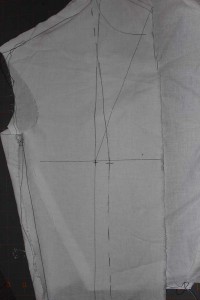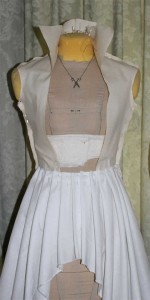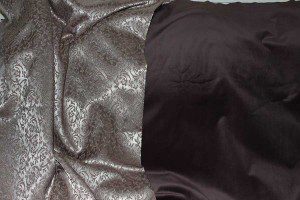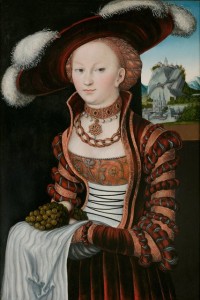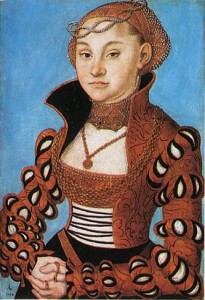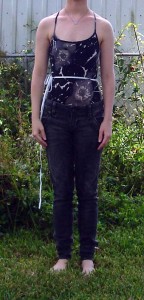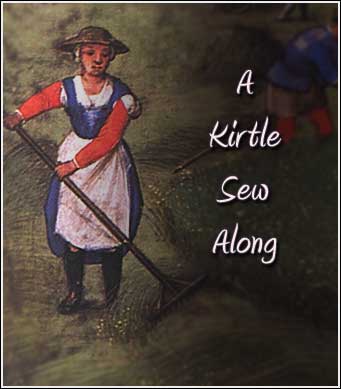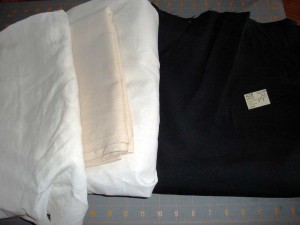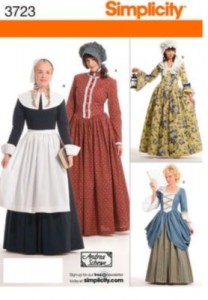I have always liked Saxon Gowns, they have a different look from the French and English gowns of the early 16th century, they have interesting construction puzzles, and an excuse to use several yards of velvet and fancy fabric is always a good thing.
After going back and forth with a friend on just how these gowns were put together, looking at lots and lots of paintings, and seeing what other costumers have done I decided to make one for myself.
I picked up some brown velveteen for cheap along with some jacquard in a similar color and started plotting.
I started a pinterest board for Cranach styled gowns to get an overview of what style elements I wanted to incorporate.
I have always been fond of the tall collared styled gowns and I haven’t seen many of them recreated so that is what I set my sights on.
I dug out my tall collared doublet pattern to use as a base for the bodice, this version of the patterns has a few issues so it would need a bit of adjustment to get things right.
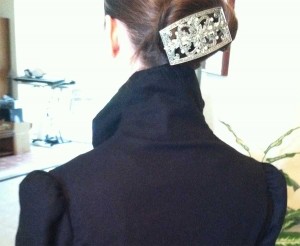
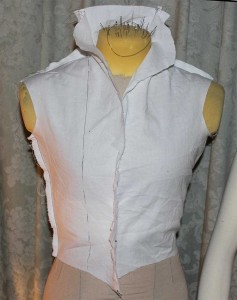
I cut out a mock-up in muslin adjusted the collar and the back of the neck.
That basted in place I put it on my dress form and marked where the bust point fell on the form.
But when I tried the mock-up on, where I marked the bust point on the form, is not where my bust point is. This is important as I’m using the bust point as a marker for where the edge of the gowns fall.
So I marked on the mock-up where my bust point hit. This also gives me the basis for how wise the front gap will be in the finished gown. Once that was marked I trued up my edges and starting at the bust point flared the front out to form the collar, and I am left with a pretty good base for the gown bodice. The only thing left to adjust is the back collar.
